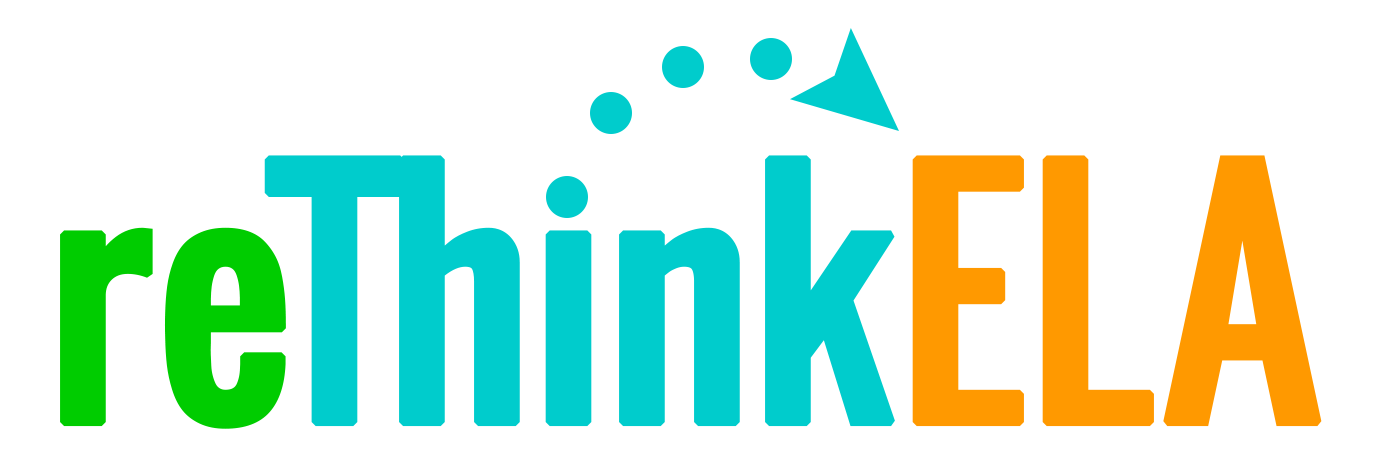It’s an English teacher’s worst nightmare (well, one of them…).
You’re grading research papers in the comfort of your living room at 1 a.m. Students have been agonizing over these papers for weeks. You’ve read rough drafts. You’ve harped on the importance of citing work, after seemingly spending hours demonstrating proper attribution and answering 1 billion iterations of the same questions.
Nevertheless, at this late hour, you’re reading a student paper, and suddenly, the sentences don’t sound like the student you know. Perhaps there are really big words you’re certain this student has never uttered. Or maybe the sentences suddenly get longer with more complex grammatical arrangements you haven’t seen since your days reading a college professor’s dissertation.
You decide to check your suspicions. After running the student’s paper through a copyright checker, your worst fears are founded.
Yes, this student has plagiarized. Now what? More importantly, how can you prevent students from making this mistake?
In order to answer these questions, we must first understand what plagiarism is.
What is plagiarism?
According to Dictionary.com, plagiarism is:
an act or instance of using or closely imitating the language and thoughts of another author without authorization and the representation of that author’s work as one’s own, as by not crediting the original author
In short, a student is plagiarizing when he is copying/borrowing/stealing the words or ideas of others without their permission and claiming the work as his own.
Several years ago, two of my students chose to plagiarize when writing their end-of-year research papers. One student copies entire chunks of one website into his paper and did not acknowledge his source in any way. This student had struggled with writing all year and had put off completing even his rough draft until the last minute.
The other student copied just one sentence. She later stated that she really wanted to use the sentence, but just could not figure out how to write the concept in her own words. She thought the one sentence would be fine.
While the first student simply made a last ditch effort to get a passing grade — hoping that I would not catch the plagiarism — the second student showed some confusion about what constitutes plagiarism and how to avoid it.
You can read more about what plagiarism is at:
- What Is Plagiarism? by Plagiarism.org
- What Is Plagiarism? by University Libraries at The University of Southern Mississippi
- Plagiarism by The Writing Center at The University of North Carolina at Chapel Hill
- Defining and Avoiding Plagiarism: The WPA Statement on Best Practices by the Council of Writing Program Administrators
Definitions
While you know the definitions of the words related to plagiarism (we couldn’t have made it through college otherwise!), you’d be surprised how many students do not know some of the basic vocabulary words. Never assume your students have a full understanding of the vocabulary words.
Below are some definitions of terms related to plagiarism that your students need to know:
The list of books and articles, etc. at the end of a research paper; often titled “References” or “Works Cited”
All the information needed to find a source of information, such as the title, author, publisher, publication date
The legal rights of the authors of intellectual property to control how their property is sold, published and distributed
Creative work completed by a person, such as writing, drawing, photography, music
Put another person’s ideas into your own words.
An exact quote of a block of words, with no changes
Types of plagiarism
The students I mentioned above plagiarized in different ways. While one student committed a wholesale copying of entire blocks of text, the other student only copied a few words. In both cases though, the students failed to acknowledge the source or place quotation marks around the copied words.
These are not the only types of plagiarism. More than 10 types of plagiarism exist, according to Plagiarism.org. You can read about the top five below:
Student completely duplicates a source and claims in belongs to him. You know this because it reads nothing like anything the student has ever written.
Student copies dignificant chunks of the source without attribution.
Student changes key words, but the essential content of the source is retained.
Student paraphrases from more than one source without proper attribution.
Student borrows material from previous works by source author, without attribution.
Consequences of plagiarism
Middle and high school students frequently think in terms of “how can I get this paper done as quickly and painlessly as possible?” They do not take into consideration their academic and professional reputations, or the future consequences of failing to learn proper citation.
Students who commit plagiarism do so for a variety of reasons, which mainly fall into the following categories: Intentional and unintentional.
Intentional Plagiarism
Intentional plagiarizers typically struggled with time management, a lack of academic integrity, or pressure to achieve better scores than normally possible. Students may also have a blase attitude towards plagiarism, thinking that everyone else does it without being caught and that they should be able to do so, as well. This may be because some teachers do not teach and enforce their school’s plagiarism policy.
Each of these excuses may result in students copy and pasting at the last minute, turning in someone else’s work at the beginning of the assignment, or copying sections of other’s work to beef up their own. These students know exactly how to cite sources, and may have completed assignments in your class where they showed an understanding of proper citation.
Teaching students what plagiarism is and modeling proper citation will prevent these students from claiming unintentional plagiarism. Catching this problem in early drafts, working with students to overcome academic self-esteem issues, working with parents to handle laziness issues, and encouraging students to use their own words and ideas can go a long way towards preventing plagiarism.
The Victim’s Perspective
This may have been the situation when students in a Canadian high school plagiarized my web design work. Before I became a teacher, I founded and managed a web design and hosting company. One of my clients, the owner of a Massachusetts bakery, contacted me one day to report that she found a website using her graphics. Not only did the web designers steal the design that she had purchased from me, they also hotlinked her graphics (which is how she found the plagiarizers).
I researched the site and discovered that it had been built by high school students in Toronto, who wanted to advertise an upcoming bake sale for their business class. Apparently, no one had explained to them that it is a copyright violation to take graphics and text from a website without permission. (Or they just didn’t listen…)
I ended up calling the principal and requesting that the site be taken down immediately. It was. End of story.
Similar stories do not end as nicely. Several bloggers recently have been charged thousands of dollars for plagiarizing photographs.
I recently read a blog post by an author who mistakenly believed that if you can find a graphic on a Google Images, it was free to use, with attribution, or a disclaimer stating that the author was not taking credit for the images posted. (The author is a romance writer, and you can click a link to her site here, but make sure the kiddos aren’t in the room.)
I also found an article by a content marketing agency that was sued for $8,000 for using a copyrighted image, and a copywriting company that ended up paying $4,000 for a photo.
Unintentional Plagiarism
On the other hand, unintentional plagiarizers usually lack an understanding of Internet citations, or do not have a clear grasp on issues of plagiarism. As a teacher, you can clear up any misconceptions these students have ahead of time by teaching them what plagiarism is, showing them examples of student plagiarism, and modeling proper citation.
In both cases, if students do not learn that they must cite their sources, and how to do so, they will set themselves up for disaster at the collegiate and professional levels.
In the short term, secondary schools may require the following consequences when students plagiarize:
- Student receives a warning for the first offense
- Student receives a zero on the assignment with no opportunity to make it up
- Office referrals, parent notifications and conferences with school guidance counselor
- Failing quarter grade
- Detention or suspension
How to avoid plagiarism
In the cases of my students, I had taught them what plagiarism is and how to avoid it. I modeled proper methods of citation. At that point, it was up to my students to make the right choices, and to ask me for help if they were confused.
If you need some sources of information to help you teach your students how to avoid plagiarism, consider these videos, presenations, and articles:
Plagiarism: How to Avoid It by Bainbridge State College
How To Avoid Plagiarism by Gulf Coast State College
http://youtu.be/Ikbrag6lM6o
Plagiarism by Wendy Wong
Penalties of plagiarism in college and careers
Students must understand that now is the time to learn proper citation, so that it becomes second nature by the time they are in college and especially by the time they begin their careers. As shown in the Prezi above, plagiarism can result in even high-level politicians losing their jobs and their credentials.
That said, some schools do not take plagiarism seriously. You will need to check with your administration, not only to find out what their written policy is, but also to find out how they enforce it. I say this because I taught at a school where the policy clearly stated that “five or more words
Below are some videos that you can show students to help them.
Rihanna Sued For Alleged Plagiarism In ‘Rockstar 101’ Video
James Clar is reportedly suing the singer for plagiarism, accusing her of copying one of his works in her 2010 video for “Rockstar 101,” The Art Daily News reports.
Led Zeppelin’s ‘Stairway to Heaven’ Targeted for Plagiarism
Lawyers representing the group Spirit claim song’s intro resembles their 1968 track “Taurus”.
CNN fires news editor Marie-Louise Gumuchian for plagiarism
CNN has fired a news editor in its London bureau for repeated plagiarism offenses, it announced in an editor’s note today.
Principal Resigns After Admitting Plagiarism
A Colorado principal has resigned after admitting that he plagiarized a best-selling book in parts of his speech to a class of 2014 graduates, according to the Longmont Times-Call.
Speeches to be reviewed after plagiarism at midstate high school
A principal at a Lancaster County high school is serving a 10-day unpaid suspension for plagiarizing the late author David Foster Wallace, and policy changes are coming.
Pastors, Sermons and Plagiarism in the Internet Age
Recent cases of high-profile pastors who have been accused of lifting others’ material are raising questions about whether pulpit plagiarism is on the rise — and whether it has become a more forgivable sin.
Plagiarism checkers
Avoiding plagiarism is as simple as following the citation guidelines above, and then checking your work. One of the questions my students always have is, what happens if they write a sentence that they think is original, but some random author has already written it. I tell them that this is highly unlikely, that it is more likely they might accidently plagiarize something they have read previously and forgotten.
In order to prevent either case, students can use the following plagiarism checkers to verify the originality and appropriate citation of their work:
- WriteCheck Plagiarism Checker (paid)
- PaperRater Plagiarism Checker (free)
- Copyscape Professional Plagiarism Search (paid)


who is the pulisher? i must know so i can cite this source in MLA format
To cite this article, I plugged the URL into Easybib.com:
Waters, Michelle. “What Is Plagiarism, And Why Does It Matter?” ReThink ELA, ReThink ELA, LLC, 23 June 2014, http://www.rethinkela.com/2014/06/what-is-plagiarism-and-why-does-it-matter/.
Thank you!